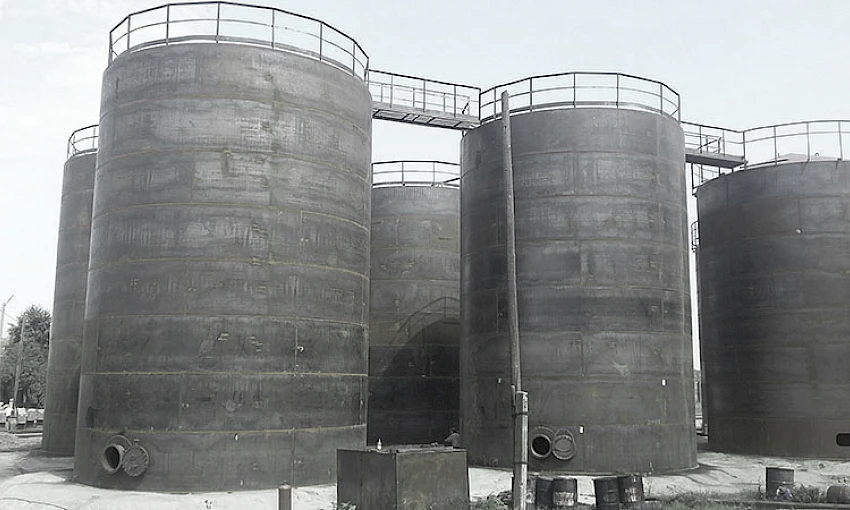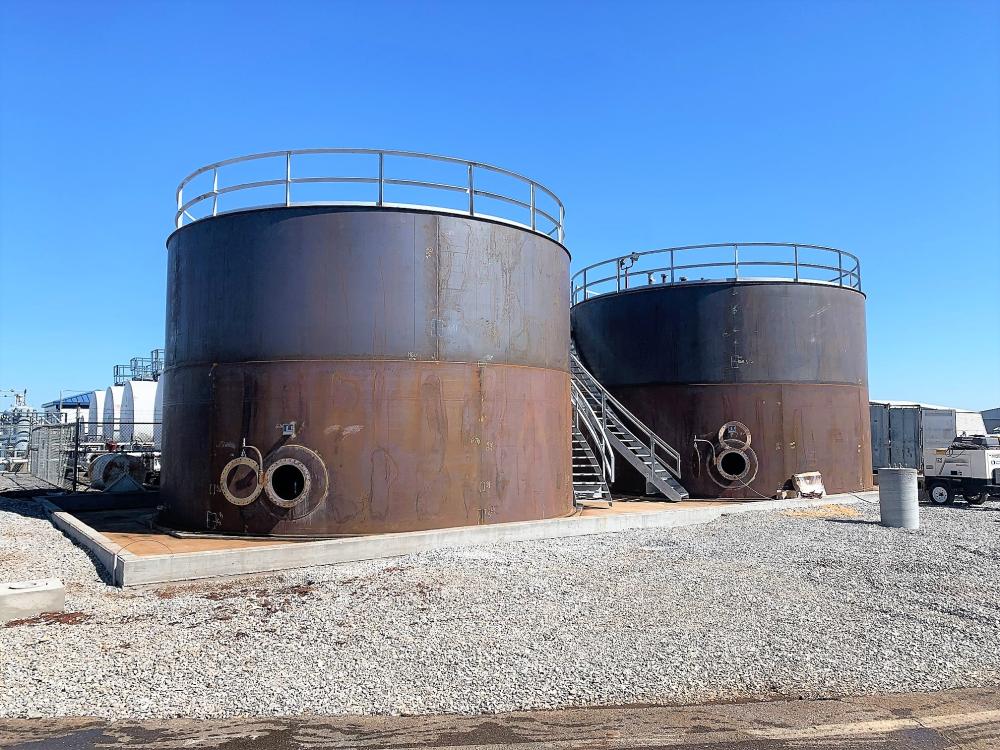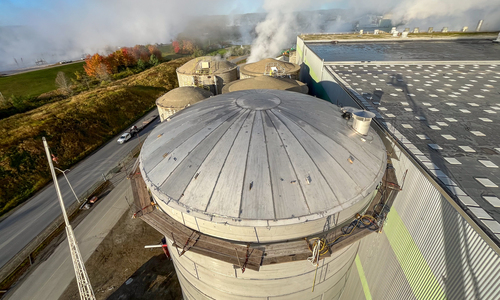The Critical Role of API 650 Welding Inspection in Safety Compliance
Wiki Article
A Step-by-Step Consider the Installation Refine of Welding Evaluation Techniques
Welding evaluation is a crucial process that assures architectural stability and safety. The setup of examination strategies includes numerous systematic steps, each important to achieving trustworthy outcomes. From planning and tool choice to conducting visual and non-destructive examinations, each stage needs careful interest. Understanding these treatments can considerably improve quality control in welding jobs. What challenges emerge in implementing these techniques, and just how can they be efficiently dealt with?Recognizing the Value of Welding Examination
Welding inspection is an essential part of making sure architectural honesty and safety in construction and production procedures. This practice involves assessing welded joints for defects, guaranteeing that they fulfill particular criteria and regulations. By systematically determining weld quality, assessors can recognize issues such as fractures, gaps, and insufficient combination, which can jeopardize the stamina and longevity of frameworks.The value of welding inspection expands past instant security issues; it assists stop expensive failures and potential hazards in the lengthy term. Reliable assessment methods foster compliance with industry criteria, therefore improving the general reliability of bonded elements. Additionally, a robust examination procedure contributes to maintaining the online reputation of makers and home builders, as it assures customers of the quality of their tasks. Eventually, recognizing the relevance of welding examination is essential for promoting secure building methods and ensuring the long life of necessary infrastructure and items.
Choosing the Right Devices for Evaluation
When choosing the appropriate tools for examination, it is crucial to consider the details requirements of the welding process and the products included. Numerous examination approaches, such as aesthetic, ultrasonic, and radiographic testing, require distinctive devices tailored to their distinct needs. For aesthetic inspections, tools like amplifying calipers and glasses are crucial for examining weld top quality. Ultrasonic screening requires specialized devices qualified of sending and obtaining audio waves to spot interior problems. Radiographic screening, on the various other hand, makes use of X-ray or gamma-ray resources along with delicate movie or electronic detectors to disclose inconsistencies.
Furthermore, individual safety tools (PPE) is vital to guarantee the safety of inspectors during evaluations. Selecting the right devices not only improves the precision of examinations but likewise contributes to the total stability and safety of the welding task. Subsequently, an extensive understanding of available devices and their applications is essential for effective welding inspection.
Planning for the Assessment Process
Before launching the assessment process, it is important to develop a detailed strategy that describes the scope and purposes of the evaluation. This strategy must include details requirements that define what comprises acceptable top quality in the welding job being inspected. Recognizing the appropriate codes and standards is crucial, as they will lead the evaluation criteria and methods.Additionally, employees included in the inspection needs to be properly educated and certified in welding examination techniques to assure reliability and precision. A list can be useful in arranging the various facets of the inspection, varying from tools preparedness to ecological conditions that might influence the assessment.

Ultimately, logistical considerations such as scheduling, offered resources, and interaction in between staff member need to be addressed. By preparing systematically, assessors can enhance the efficiency of the examination and make certain that all critical factors are duly considered before waging the assessment itself.
Carrying Out Visual Inspections

Carrying out visual inspections is a crucial action in the welding inspection procedure, requiring mindful preparation to guarantee efficient evaluation. Assessors should know with crucial defect indications that can signal possible issues in weld top quality. By concentrating on these facets, one can enhance the general reliability of the assessment outcomes.
Getting Ready For Visual Inspection
Aesthetic inspection acts as a critical primary step in the welding inspection procedure, assuring that any prospective issues are identified early (API 650 Welding Inspection). Correct prep work is vital for reliable aesthetic evaluation. Examiners need to begin by evaluating pertinent documentation, including welding procedures and specs, to recognize the project demands. They need to collect necessary tools, such as amplifying glasses, flashlights, and proper individual safety equipment (PPE) An extensive exam of the inspection area is essential; examiners must validate it is totally free and tidy of blockages. Furthermore, it is very important to develop ideal lighting conditions to enhance visibility of welds. By taking these preparatory steps, inspectors can develop a setting for recognizing disparities and ensuring the honesty of the bonded frameworksSecret Defect Indicators
A thorough understanding of key defect indications is essential throughout aesthetic assessments to ensure the high quality and safety of welded joints. Assessors must concentrate on Discover More Here particular indicators such as splits, porosity, damages, and incomplete blend. Cracks may appear as sharp lines and can compromise architectural stability. Porosity materializes as little openings that can damage weld toughness. Undercuts, which are other grooves along the weld side, can cause tension focus. Incomplete combination indicates that the weld steel did not properly bond with the base product, leading to a weak joint. By systematically determining these issues, examiners can determine compliance with market requirements and boost the overall integrity of welded structures, eventually adding to more secure functional problems.Implementing Non-Destructive Evaluating Methods

Various non-destructive testing (NDT) techniques are essential to guaranteeing the honesty of welded structures without compromising their capability. These approaches permit examiners to examine weld quality and discover problems without creating damages to the materials being evaluated. Usual NDT techniques include ultrasonic testing, radiographic screening, magnetic fragment testing, and color penetrant screening. Each method serves a details purpose, dealing with various kinds of imperfections such as splits, porosity, or insufficient blend.
Implementing NDT techniques requires a systematic method, beginning with selecting the suitable method based on the products and the nature of the weld. Educating employees in these strategies is crucial for exact outcomes. Furthermore, establishing clear procedures and standards guarantees uniformity throughout the examination procedure. By integrating NDT into the welding inspection workflow, companies can improve the dependability of their products while minimizing possible dangers connected with structural failings. This positive method ultimately adds to preserving safety and high quality standards in bonded buildings.
Documenting and Analyzing Examination Outcomes
Effective documents and analysis of examination results are important parts of the welding evaluation procedure. Exact records of evaluation findings work as a reference for quality control and conformity with industry requirements. API 650 Welding Inspection. Assessors ought to make use of electronic systems or structured types to log information such as the kind of weld, assessment approaches employed, and any type of disparities identified during the analysisOnce data is accumulated, comprehensive evaluation is essential. This includes comparing results versus developed standards to recognize trends or repeating problems. Statistical tools may be utilized to measure flaws and analyze their effect on total weld top quality.
Moreover, effective communication of findings to relevant stakeholders is crucial. Recaps and records should be succinct and clear, highlighting essential insights and referrals for rehabilitative actions. By systematically recording and evaluating inspection results, companies can cultivate continuous enhancement in welding methods and boost item integrity.
Often Asked Concerns
What Credentials Are Required to Become a Welding Inspector?
To end up being a welding examiner, one commonly requires relevant certifications such as AWS CWI, together with experience in welding techniques, expertise of welding codes, and proficiency in inspection techniques to ensure high quality and security criteria.Just How Often Should Welding Inspections Be Conducted?
Welding evaluations must be performed consistently, typically after each weld is completed, and periodically during jobs. Aspects visit the site such as job intricacy, market requirements, and regulative demands can influence the frequency of these examinations.What Is the Price of Welding Evaluation Services?
The cost of welding inspection services varies significantly based upon factors such as project dimension, place, and complexity. Usually, rates range from $100 to $150 per hour, with extra costs for specialized testing and qualifications.Exist Certifications for Welding Inspectors?
Yes, there are different accreditations for welding inspectors, including those used by the American Welding Culture (AWS) and the International Institute of Welding (IIW) These certifications ensure examiners have the necessary abilities and expertise for reliable examinations.
Just how Do I Pick an Examination Provider?
To select an examination provider, one need to assess certifications, experience, sector credibility, and client testimonials. Additionally, comparing solution offerings and rates can help ensure the chosen copyright meets particular job requires properly.Additionally, workers included in the examination must be properly trained and accredited in welding examination strategies to guarantee reliability and accuracy. Conducting visual evaluations is a necessary action in the welding inspection process, calling for mindful prep work to assure effective examination. Aesthetic inspection serves as an essential first step in the welding evaluation process, ensuring that any kind of possible issues are identified early. Effective documents and analysis of examination outcomes are necessary elements of the welding examination procedure. Welding inspections ought to be performed on a regular basis, generally after each weld is completed, and regularly throughout tasks.
Report this wiki page